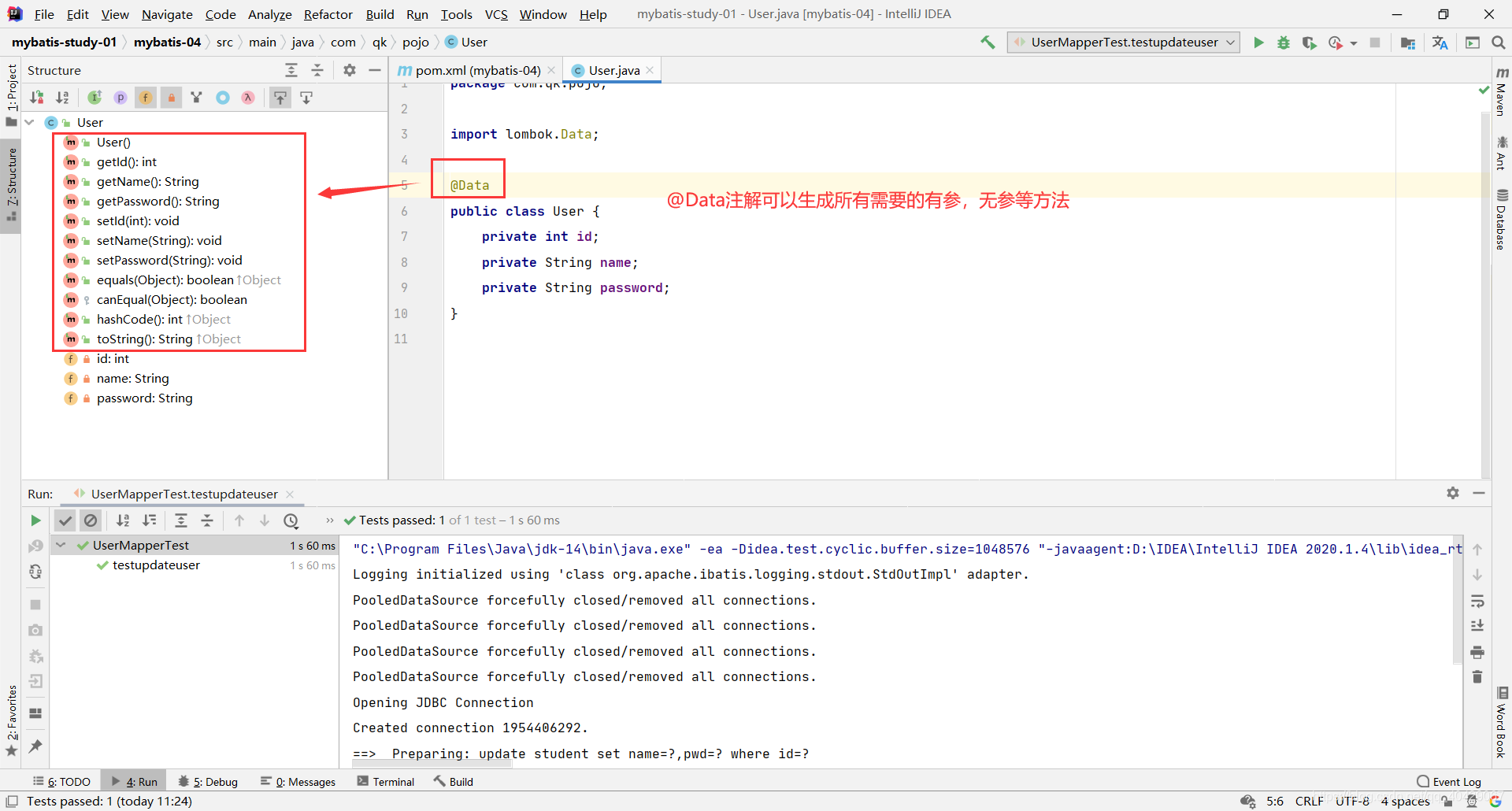Lombok
本文共 590 字,大约阅读时间需要 1 分钟。
1. 在IDEA中下载Lombok插件
2. 在pom.xml中引入Lombok依赖
3. 在实体类加注解
Features
@Getter and @Setter @FieldNameConstants @ToString @EqualsAndHashCode @AllArgsConstructor, @RequiredArgsConstructor and @NoArgsConstructor @Log, @Log4j, @Log4j2, @Slf4j, @XSlf4j, @CommonsLog, @JBossLog, @Flogger, @CustomLog @Data @Builder @SuperBuilder @Singular @Delegate @Value @Accessors @Wither @With @SneakyThrows @val @var experimental @var @UtilityClass Lombok config system Code inspections Refactoring actions (lombok and delombok)@Data:生成的有:无参构造,get,set,tostring,hashcode,equals
@AllArgsConstructor @NoArgsConstructor



转载地址:http://qufa.baihongyu.com/
你可能感兴趣的文章
Node-RED中使用range范围节点实现从一个范围对应至另一个范围
查看>>
Node-RED中实现HTML表单提交和获取提交的内容
查看>>
Node-RED中将CSV数据写入txt文件并从文件中读取解析数据
查看>>
Node-RED中建立TCP服务端和客户端
查看>>
Node-RED中建立Websocket客户端连接
查看>>
Node-RED中建立静态网页和动态网页内容
查看>>
Vue3+Element-ul学生管理系统(第二十二课)
查看>>
Node-RED中怎样让网站返回JSON数据
查看>>
Node-RED中根据HTML文件建立Web网站
查看>>
Node-RED中解析高德地图天气api的json数据显示天气仪表盘
查看>>
Node-RED中连接Mysql数据库并实现增删改查的操作
查看>>
Node-RED中通过node-red-ui-webcam节点实现访问摄像头并截取照片预览
查看>>
Node-RED中配置周期性执行、指定时间阶段执行、指定时间执行事件
查看>>
Node-RED安装图形化节点dashboard实现订阅mqtt主题并在仪表盘中显示温度
查看>>
Node-RED怎样导出导入流程为json文件
查看>>
Node-RED简介与Windows上安装、启动和运行示例
查看>>
Node-RED订阅MQTT主题并调试数据
查看>>
Node-RED通过npm安装的方式对应卸载
查看>>
node-request模块
查看>>
node-static 任意文件读取漏洞复现(CVE-2023-26111)
查看>>